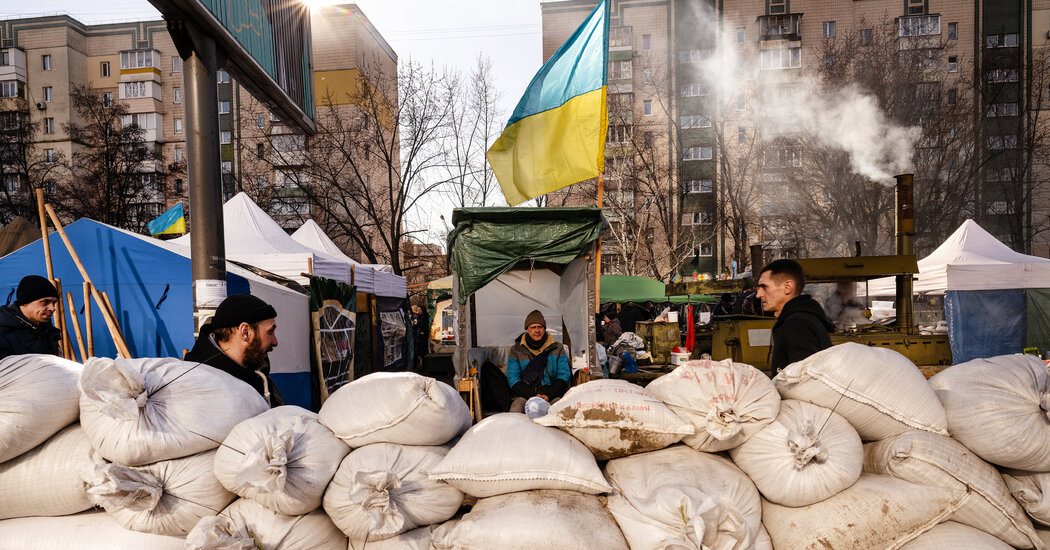
The tactics Lieutenant Chornovol described are indicative of the city’s defenses, which rely on a blend of sophisticated air defense systems, army troops, civilian volunteers and paramilitary organizations.
An urban environment favors booby traps, ambushes and lightly armed but mobile defenders against a regular army. Ukrainians have laid out pie-sized anti-tank mines on the shoulders of roads, which can be quickly dragged across streets to block advances. In cities, the urban grid channels the invader’s armored vehicles into narrow streets, where they become vulnerable.
The Russians also have a formidable force, but of a different nature. They rely on superior troop numbers and powerful, but less mobile, weaponry.
Russian tanks, for instance, are moving methodically in long columns through small towns outside Kyiv, rarely straying from roads. At times, the vehicles are creating gigantic traffic jams.
On the Dnieper River’s west bank, soldiers and vehicles from two Siberia-based Combined Arms Armies — parlance for large Russian military groupings — are creeping forward, said Michael Kofman, the director of Russia studies at CNA, a research institute in Arlington, Va. Russian special forces units, or Spetsnaz, have turned the once-tranquil suburb of Irpin into a battle zone, he said.
On the eastern bank, Russia’s 41st Combined Arms Army has been probing into outlying towns like Brovary, where Lieutenant Chornovol blew up a Russian tank.
Why the Russians are advancing tanks into the urban landscape of Kyiv’s outskirts, where they are vulnerable to ambush, is something of a mystery, Mr. Kofman said. “They are trying to make quick progress down roads while the Ukrainians are trying to engage them in cities, rather than out in the open fields,” he said.




